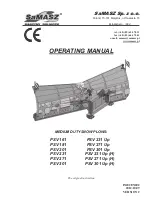
9
Condensation
• If this device has been cooled down in a cold place and is
then carried to a warm place, the moisture contained in
the warm air may adhere to the head drum or tape guides
and be cooled into water droplets. This phenomenon is
referred to as condensation (dew). When this occurs, the
head drum and tape guides are covered with droplets
allowing the tape to be stuck to them, leading to tape dam-
age.
• Condensation occurs in the following cases:
• When this device is suddenly
moved from a cold place to a
warm place.
• When a room heater has just
started or when this device is
exposed directly to cold air from
an air conditioner.
• When this device is placed in a
very humid place.
• “CONDENSATION ON DRUM” is displayed on the LCD
monitor and in the viewfinder when condensation occurs
in this device.
Keep the power on until the warning message disappears.
If the power is turned off while the warning message is dis-
played, condensation may remain in the device even if the
warning message is not displayed. Wait until this device is
completely dry before using.
• Pay attention to condensation even before the condensa-
tion indication appears.
As condensation forms gradually, the condensation indica-
tion may not appear for the first 10-15 minutes after con-
densation has formed inside.
In an extremely cold place, the condensation could freeze
and turn into frost. In such a case, it takes an additional 2-
3 hours for the frost to first melt into condensation and
then to be dissolved.
• To prevent condensation
When moving this device from one place to another where
the temperatures are greatly deferent, first remove the vid-
eocassette, place this device in a tightly sealed vinyl bag,
and then move it to a new environment.
To ensure no condensation occurs, allow the temperature
of this device in the bag to reach that of the new environ-
ment before using it.
Characteristic CCD Phe-
nomena
Smear and Blooming
Due to the physical structure of a CCD it is possible to induce
vertical streaking (called “smear”) when shooting an
extremely bright light source. Another effect is the expansion
of light around a bright light or object (called “blooming”).
The CCD employed in this device is characterized by induc-
ing very little smear or blooming. Nevertheless, please take
note that smear or blooming may be induced when shooting
a bright light source.
Moire or Aliasing
Shooting stripes or fine patterns may cause a jagged effect
or a banding in fine mesh patterns.
White dots
High temperatures can cause CCD sensor pixels to produce
the effect of white dots in the image. This condition is con-
spicuous especially when gain is applied.
This is a characteristic of the charged-coupled device (CCD).
As far as possible, use this device under conditions where
the temperature of this device does not increase.
Do not leave the videocassette inserted when moving the
camera under conditions where the temperature environ-
ment changes.
After moving this device, do not use until the internal parts
have stabilized.
Head drum
Video tape
Smear
Vertical pale streaking appearing at high
luminous object
High luminous object
(Electric light, sunlight, etc.)
Blooming
Blurring in highlight
Monitor screen
e_hd250.book Page 9 Tuesday, October 24, 2006 3:11 PM














































